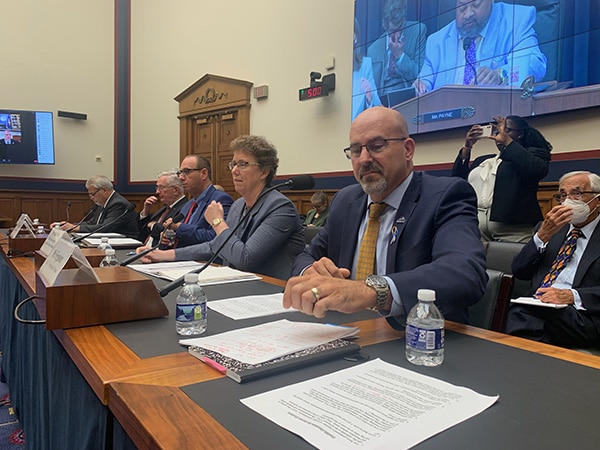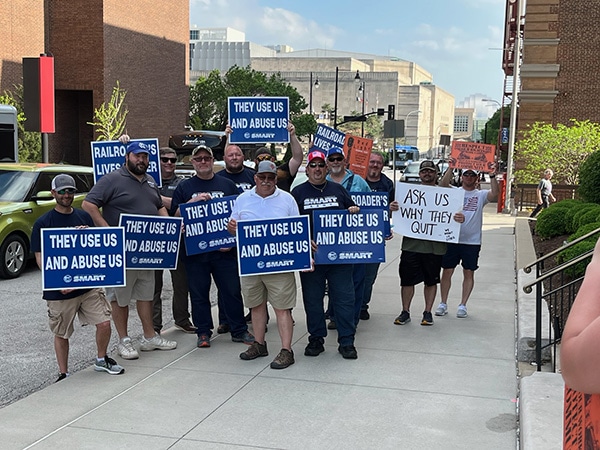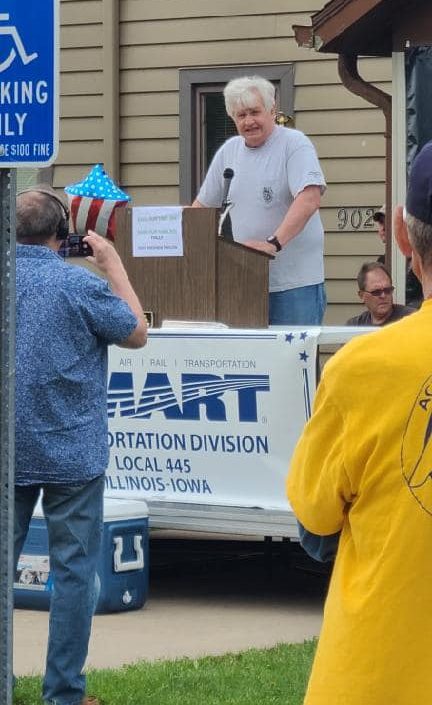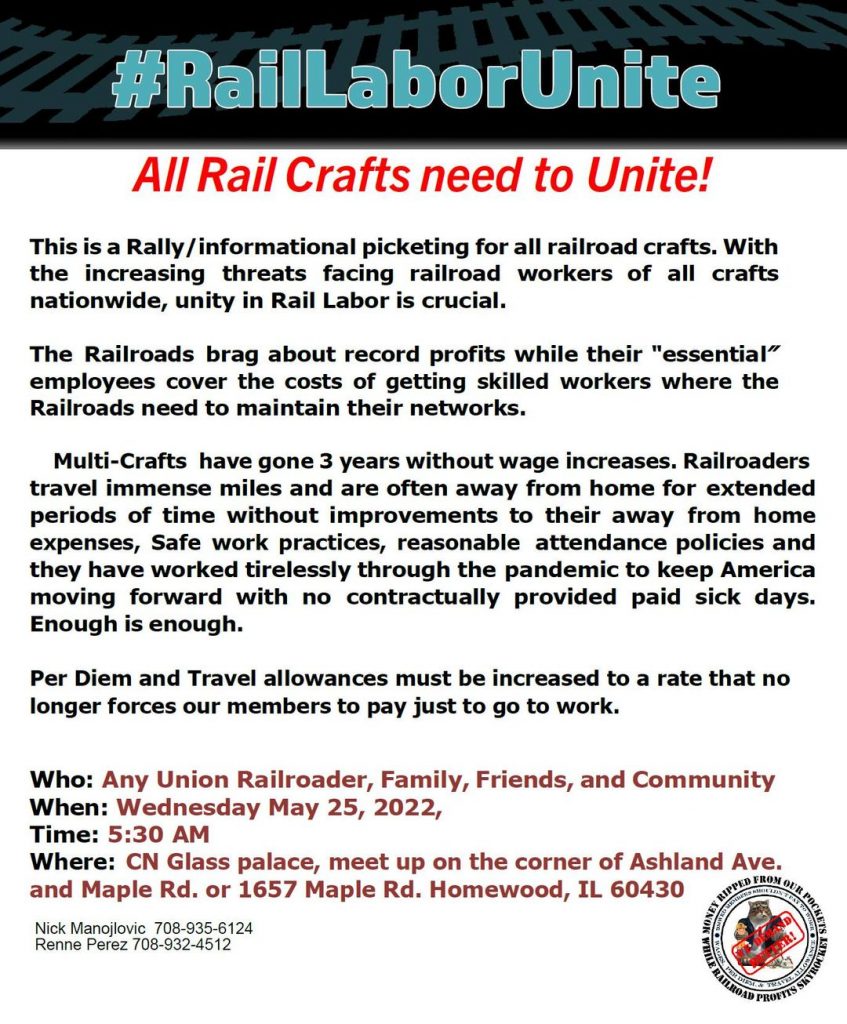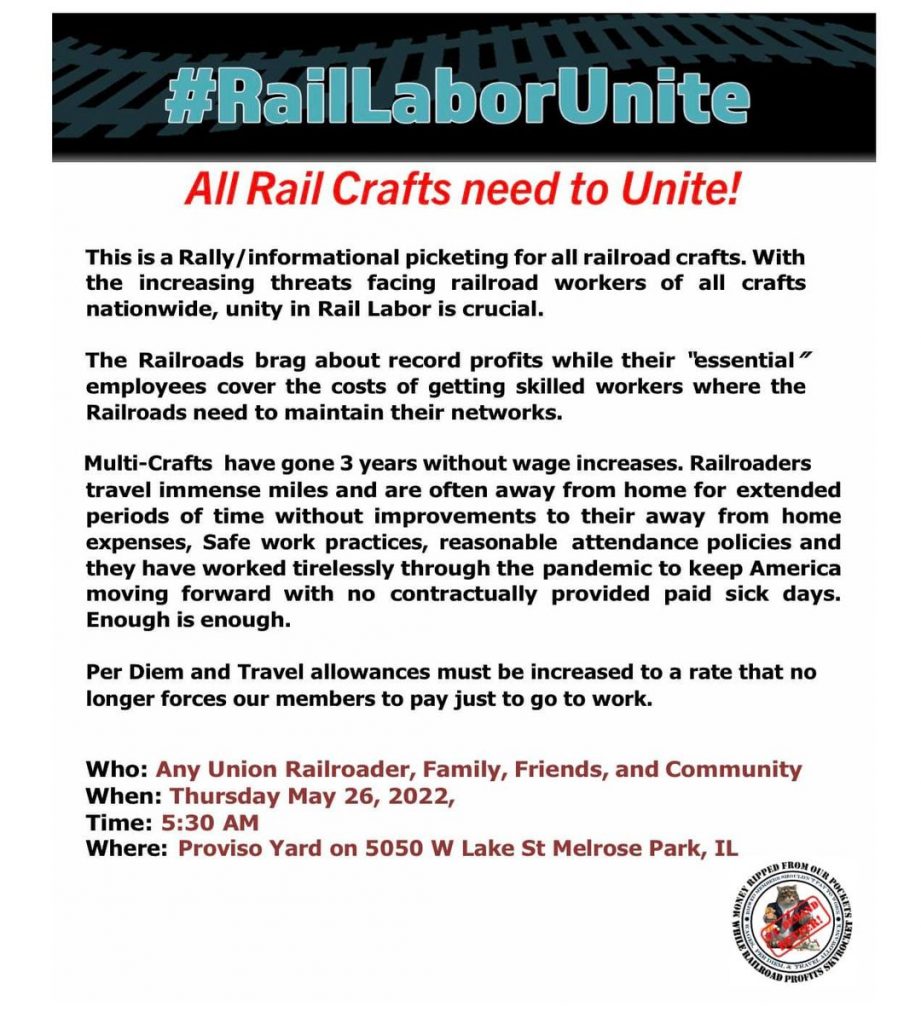

SMART Transportation Division (SMART-TD) would like to take a few moments to update the thousands of essential rail workers whom we proudly represent, the rail shippers and customers, as well as the public at large on the real status of labor negotiations and about the serious factual misrepresentations that the Association of American Railroads (AAR) and railroad representatives are stating as “FACT” surrounding the “railroad labor negotiations and the need to avert a network shutdown.” Their claims are simply not true.
Let me be clear, rail labor is NOT looking to strike or shut down the nation’s economy at the expense of everyone. We want and deserve a fair agreement for our members. We strongly believe that a Presidential Emergency Board (PEB) will help us to garner that without the necessity of a strike. This does not mean that we will not do what’s necessary to get a fair agreement, but rather we expect the Railway Labor Act (RLA) to do its job as it has in the past so that it does not come to that. We are fully prepared to act if the provisions of the RLA get to the point of self-help or strike.
I was present and testified with a full team of experts in front of the Surface Transportation Board (STB) on April 26th and 27th in Washington D.C., concerning the massive network disruptions, the negative effects of Precision Scheduled Railroading (PSR), and the pending supply chain collapse due to railroad mismanagement of their networks. Shippers don’t know when they will be serviced, and the workforce doesn’t know when we will be going to work. I was proud to testify to make it known that we fully support our customers’ efforts to have the reliable and consistent service that they not only deserve, but also contracted with the railroad(s) for. I made it clear then, and now do so once again, that we stand ready to do everything within our power to keep freight moving and to support this country’s supply chain and economy.
Much like the testimony delivered by the railroads and AAR at the STB hearings, again there’s a steady stream of lip service, half-truths and misleading innuendo trying to skew the truth about the status of negotiations. I would also note that, to date, the AAR has not put forth any data supporting the “fair” percentage wage increases they are proposing and “provide well-deserved compensation increases to our essential employees and are consistent with labor market benchmarks.” What they are purporting as fair is only fair in their eyes and obviously not seen as “fair” by their essential employees who are quitting their jobs in record numbers. I have been at the negotiating table. I have yet to see any fair proposals put forth by the carriers in three years of negotiations. The benchmarks they are using at the negotiating table were established well before the pandemic and inflation occurred. I would also cite the fact that due to the PSR scheme worker productivity is running at such a high level that it is literally about to snap like an overstretched cable or chain.
Assuredly, a 16% wage increase over five years is not acceptable by today’s benchmarks. The railroads’ plans to increase the employees’ share of healthcare costs to such a point that the raises become net-zero is not reflective of rail carriers’ record profits or of their desire to keep their “valued freight rail customers,” isolated from further network disruptions caused by lack of manpower. The proposed five-year increases also come below all standard cost of living metrics. The railroads these days are having a very difficult time attracting potential new employees because of their refusal to bargain in conjunction with today’s benchmarks, much in the same way that they refuse to acknowledge shippers’ need to have sufficient and reliable service in accordance with their common carrier obligations.
On multiple occasions, SMART-TD has stood up for shippers, while carriers lacked any interest in fixing the current shipping problems that worsen by the day. PSR is the reason. Everyone knows it. Legislation may be needed for a permanent fix to the problem, and I think that day is coming soon. The quickest fix is to stop the railroads from running such ridiculously long trains, which the current infrastructure can’t handle, and get back to basics now! Instead, they cajole shippers to help them save a few dollars of their record profits, wanting to tip the scales against the very people who do the work and who are chiefly responsible for getting the railroads their profits. This is appalling. By hanging the fear of service disruptions in front of the shippers, it would almost be comical if the current state of the supply chain situation were not so dire.
Meanwhile, the tales told by the mouthpieces of the carriers keep getting bigger and bigger. One such fish tale dangled in front of people mentions that labor seeks a 47% wage increase. Even the head of the National Railway Labor Conference can’t provide the evidence to document this whopper. The truth is the three biggest railroads at the negotiating table don’t want to part with ANY of their record profits, nor do they wish to reward the workers who have busted their asses for the last three years without a raise, to get them those record profits. The shareholders were rewarded with record buybacks of $10 billion. Where is the reward for the employees who are actually doing the back-breaking work to make those buybacks possible? With a stale contract that has been in effect since prior to inflation taking hold, the workers have nothing to show for their blood, sweat and tears, as well as the sacrifices they and their families have made.
Pouring on the risk and absurdity, the big 3 claim they wish to get a deal done given those “fair” proposals they’ve allegedly made. What they’re not telling everyone is that instead of negotiating with labor at the national table to get this deal done, they are instead more concerned with keeping up their mediation meetings in an attempt to get a crew-consist agreement completed to further reduce the rail workforce, thanks to the allegedly “fair” arbitrator selection process out of the previous National Mediation Board (NMB). Carriers again are attempting to go to one person occupying the cab of a freight train. (Their ultimate stated goal is zero crewmembers on trains frequently carrying hazardous freight.) Such a measure would put the safety of our communities at serious risk and the supply chain in dire jeopardy, more so than it is right now. Were carriers so concerned about a fair national agreement to stop service disruptions, one would think they would concentrate on the goal of a national agreement. Instead, carrier execs and their cronies are off for two weeks at a time trying to find a way to get rid of more employees rather than trying to come up with a fair and equitable agreement to keep the ones they now have. UNBELIEVEABLE, but not surprising!
Class 1 railroads are not just servicing their own greed and that of Wall Street, they are working against serving their own customers, their own workforce, the families of their employees, the communities they serve and the American economy. This strategy will net them those short-term monetary gains they desire at the expense of the long-term viability of the American supply chain, our national security and the long-term health of the national economy.
Lastly, I find it very offensive that the railroads, via the AAR, would reach out to the shippers to assist their efforts in advocating for so-called “fair-minded” arbitrators with rail industry experience to the Presidential Emergency Board (PEB) to help facilitate what they perceive to be a reasonable agreement and avoid network disruptions. We all know that getting a good contract for the workforce will not only stop the bleeding, but it will also help employee morale and keep the supply chain moving. Absent an enticing contract, the current workforce will continue to shrink and worsen the situation more than any other factors possibly could. I can’t stop my members from leaving the industry, but the railroads can by offering a truly fair and equitable agreement with wage increases, no changes to healthcare costs and predictable scheduling, among other asks.
To the rail customers: I urge you to respond to the AAR’s request by telling them that you support SMART-TD and labor as we have supported you. We have faith that the Railway Labor Act process will work just fine, much like it always has since 1934, and you should too. Don’t let yourselves “get railroaded” by the AAR. America’s Class 1 railroads are attempting to “railroad” customers, railroad employees, their families, and the American public, as a whole, and “attention must be paid.” Don’t listen to their propaganda. Do your research and look at the facts for what they are. I can assure you, if the carriers get what they are proposing, things will only get worse and it will be their own fault.
Sincerely,

Jeremy R. Ferguson
President, Transportation Division

